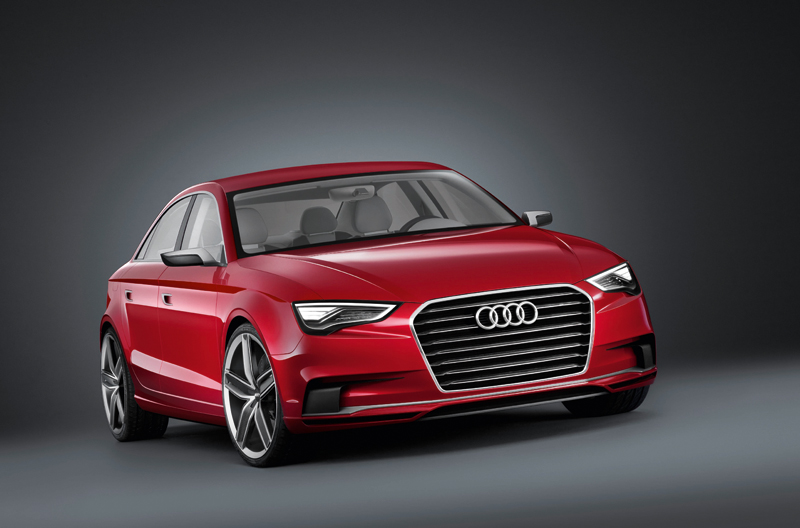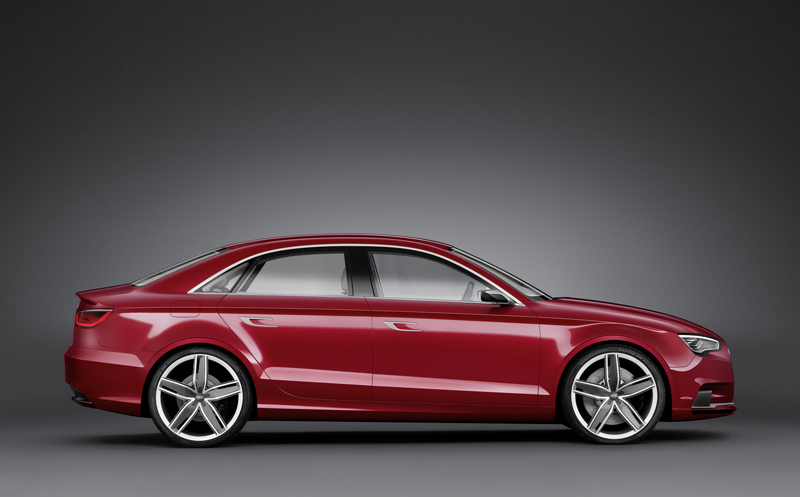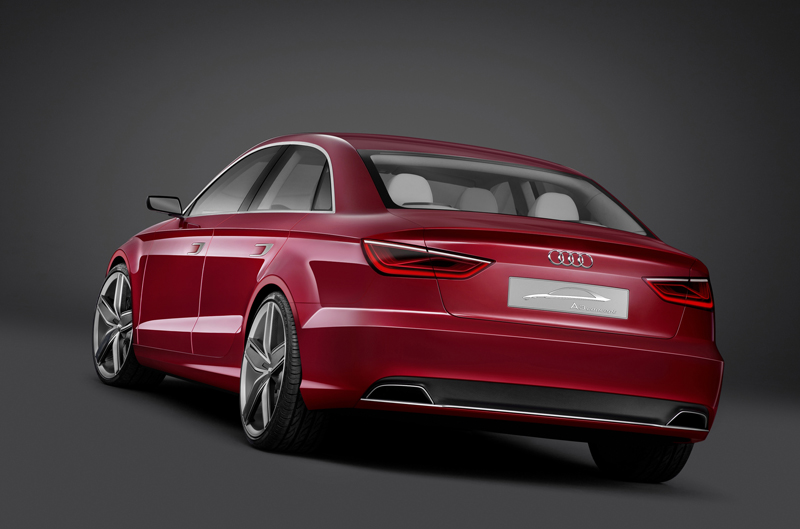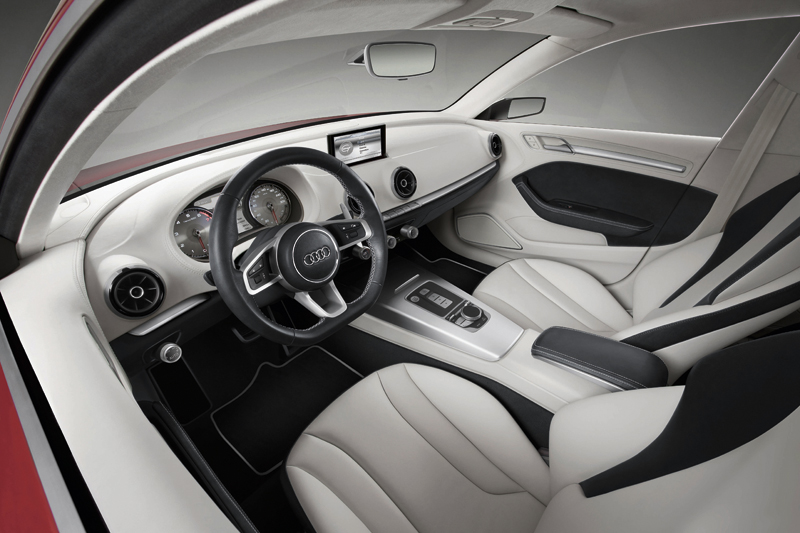At the Geneva Motor Show, Audi unveiled an attractive technical study — the A3 concept.
The four-seat notchback sedan integrates the full breadth of the brand’s technological expertise – from the improved MMI operating system, to the high-tech infotainment system, to the drivetrain. A five-cylinder turbo developing 408 bhp, a seven-speed S tronic and quattro permanent all-wheel drive ensure thrilling dynamics along with high fuel efficiency. Its peak torque of 500 Nm is available over a broad rev range between 1,600 and 5,300 rpm. Its performance is a complete homage to tradition: The A3 concept catapults from a dead stop to 100 km/h in 4.1 seconds, and its electronically governed top speed of 250 km/h is merely the official figure.

The Audi A3 concept is a four-seat notchback sedan. It measures 4.44 metres long and 1.84 metres wide, but just 1.39 metres high — proportions that underscore its dynamic character. The design represents the typical Audi language of sporty elegance. The single-frame grille is integrated into the front end, giving it a sculptured look. Its frame is made of carbon-fiber-reinforced plastic (CFRP), and the transversely mounted, three dimensional aluminum louvers create a visual effect that emphasises the showcar’s width. The headlights merge with the beveled upper corners of the single-frame, forming a transition that marks the starting point of the prominently accentuated lines of the engine hood. The headlights represent a new stage of evolution in LED technology, a groundbreaking innovation from Audi. They become broader as they extend outward, and a line underneath them makes them seem to float on air. Above the front spoiler is a full-length air intake, also made of CFRP, framed by a metal clasp. The spoiler features a splitter that raises the down force on the front wheels.

When viewed from the side, too, the A3 concept is recognisable at first sight as an Audi. Harmonious proportions, taut, muscular surfaces and a low roof dome with fluid lines flowing into a flat, coupé-like C-pillar. The shoulder area transitions elegantly into the tailgate. Characteristic of Audi design, the greenhouse accounts for one-third of the height, while the sheet metal makes up the remaining two-thirds. Powerfully flared fenders hint at the power of the engine. Two prominently elaborated lines accentuate the flank: the undercut tornado line beneath the window edge and the dynamic line above the sills. The outside mirrors, made of aluminum and CFRP, are perched on the top shoulder, just like on a sports car. The door handles with their brushed-aluminum clasps are recessed flush with the door. When the driver touches them, they power-extend.

The intelligent interplay between surfaces and lines also defines the tail end of the A3 concept. The broad, flat taillights are sculptured and culminate in a point on the inside, and the tailgate bears an elegant spoiler edge. The rear apron includes a diffuser insert of CFRP and metal, which in turn surrounds the two large tailpipes for the exhaust system. Ultra-modern components, design methods and joining techniques keep the body weight low. One example of this is the custom tailored blanks (panels of various thicknesses) in the floor area. The doors, engine hood and tailgate are made of aluminum. The extra stiff body provides the basis for the sedan’s precise handling, excellent vibrational comfort and low weight — the Audi A3 concept tips the scales at just 1,540 kilograms.

In terms of fuel consumption, the four-seater requires just 9.1 litres of fuel per 100 km and emits 212 grams CO2 per km. A regulated oil pump, the intelligent Audi thermo-management system and a energy recovery system — technologies from the brand’s modular efficiency platform — all contribute to this high efficiency. A compact seven-speed S tronic serves as the transmission. It comprises two transmission structures, which are operated by two clutches. Gears are alternately shifted by the two clutches — at lightning speed, comfortably, and without any perceptible interruption of traction. The driver can operate the seven-speed S tronic in one automatic mode and one manual mode, using the paddles on the steering wheel to shift gears manually. Elegant touch control buttons on the center tunnel console are used to select drive positions R, N and D. These are backlit in red when it gets dark. Drive position P is automatically engaged when the electric parking brake is applied. The launch control system manages the sprint from a dead stop, furnishing explosive turbo power with minimal tyre slip. Power is effortlessly transmitted to the road via quattro permanent all-wheel drive. Its centerpiece is an electronically controlled multi-plate clutch at the end of the propeller shaft. When slip occurs at one of the axles, the clutch redirects the majority of the torque input to the wheels with the better grip.
